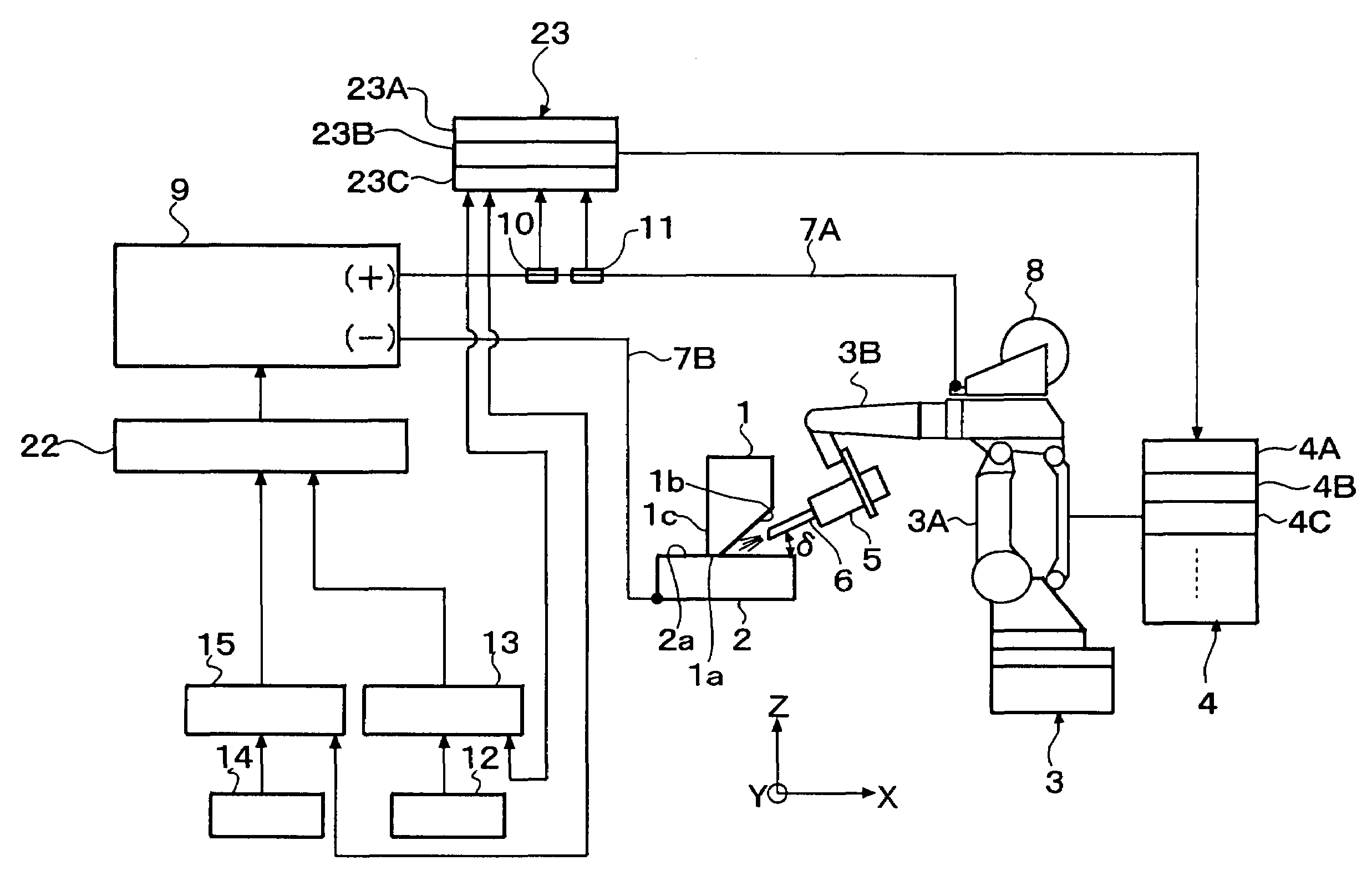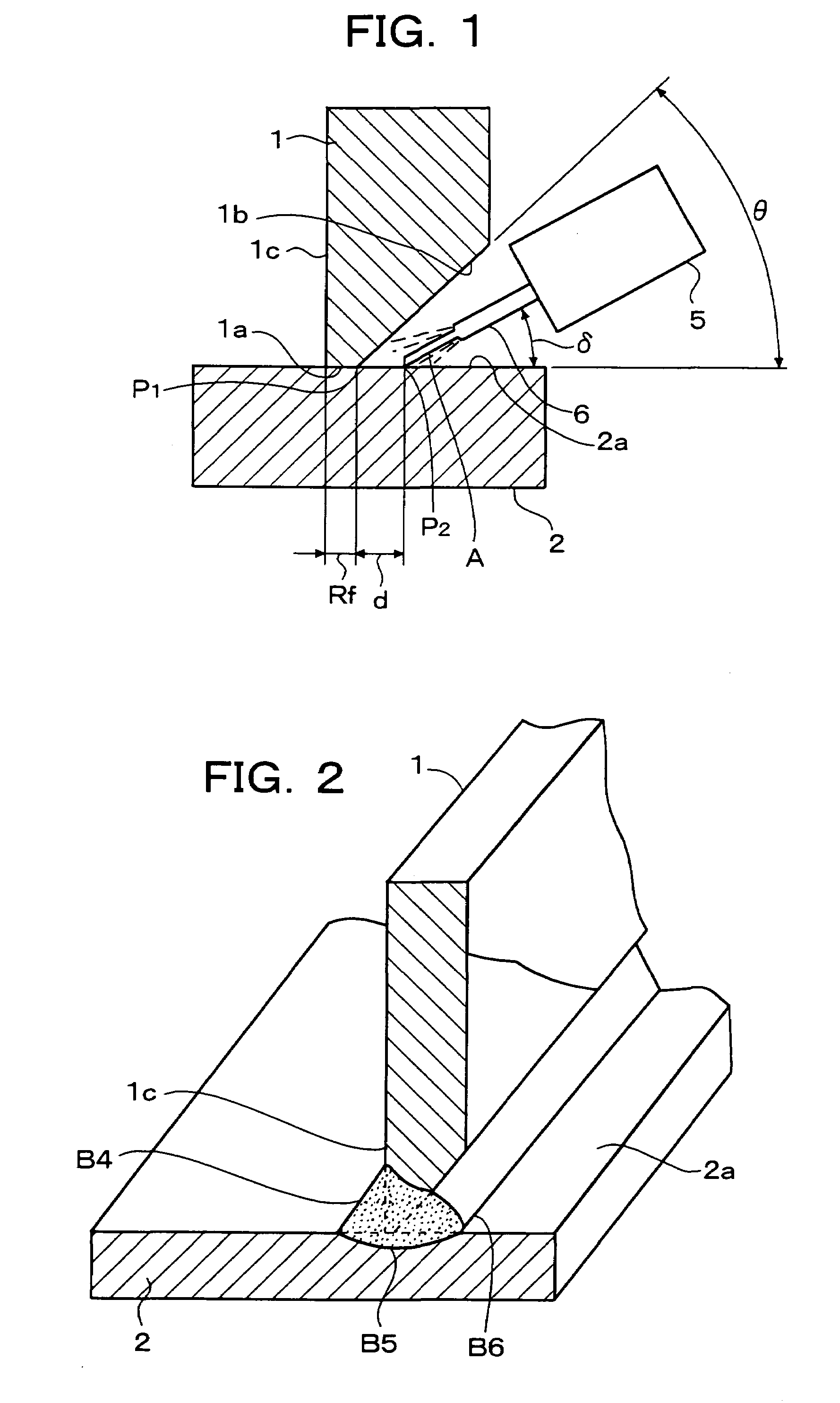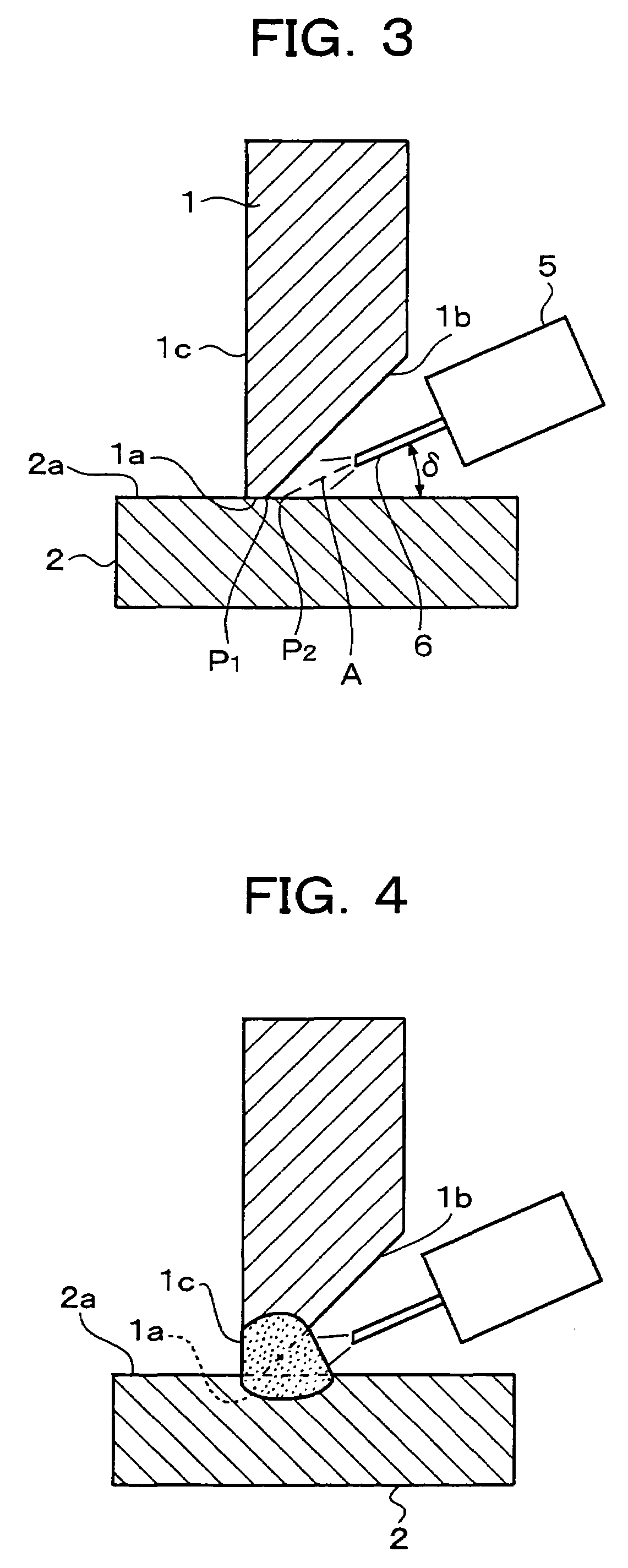Welding method, welding device, welded joint, and welded structure
a welding device and welding technology, applied in the direction of welding/cutting media/materials, welding apparatus, manufacturing tools, etc., can solve the problems of difficult tracing of weld lines, conventional arc sensing methods, and difficulty in tracing weld lines, so as to accurately force out melt and improve welding workability.
- Summary
- Abstract
- Description
- Claims
- Application Information
AI Technical Summary
Benefits of technology
Problems solved by technology
Method used
Image
Examples
first embodiment
1. First Embodiment
[0070]FIG. 1 through FIG. 9 are drawings for illustrating a welding method according to a first embodiment of the present invention.
[0071]FIG. 1 is a schematic view illustrating welding work for a “T” joint by the first embodiment of the welding method of the present invention, and FIG. 2 is a perspective view showing the “T” joint welded by the welding work illustrated in FIG. 1.
[0072]FIG. 1 illustrates a state upon welding a first base material 1 and a second base material 2 with each other by bringing them into abutment in the form of “T”. The first base material 1 is provided at a butted end portion thereof with a root face 1a and a single groove face 1b which serves to form a single bevel groove. The second base material 2 has a flat surface 2a positioned in contact with the root face 1a of the first base material 1, and in combination with the first base material 1, forms a “T” joint. Numeral 5 designates a welding torch, and numeral 6 indicates a welding wi...
second embodiment
2. Second Embodiment
[0103]FIG. 10 is a schematic view illustrating a second embodiment of the welding method according to the present invention, and shows welding work for a “T” joint. In this embodiment, elements equivalent to the corresponding elements in the above-described first embodiment are designated by like reference signs, and overlapping descriptions are omitted.
[0104]In this second embodiment, a welding wire 6 held in place on a welding torch 5 and fed by unillustrated feeding means is held at an inclination a relative to a flat surface 2a of a second base material 2 while being directed to an aimed point P2. In this embodiment, welding is performed while causing the welding wire 6 to weave. The weaving is effected by driving the welding torch 5 under control such that the welding wire 6 oscillates at a predetermined amplitude in the direction of an arrow 50 while maintaining the above-described inclination ä. The amplitude and pitch of oscillation for the weaving are de...
third embodiment
3. Third Embodiment
[0107]FIG. 11 is a schematic view illustrating a third embodiment of the welding method according to the present invention, and shows welding work for a “T” joint. In this embodiment, elements equivalent to the corresponding elements in the first and second embodiments are designated by like reference signs, and overlapping descriptions are omitted.
[0108]In the third embodiment, weaving of a welding wire 6 is performed by driving a welding torch 5 under control such that a tip of a welding wire 6 is swung in the form of a circular arc over á degrees about a predetermined inclination ä as a center. In this third embodiment, a bead B4 in the form of a fillet weld can also be deposited between a back side 1c of a first base material 1, said back side being located on the back side of the groove, and a flat surface 2a as in the above-mentioned embodiments.
PUM
| Property | Measurement | Unit |
|---|---|---|
| Time | aaaaa | aaaaa |
| Current | aaaaa | aaaaa |
| Electric potential / voltage | aaaaa | aaaaa |
Abstract
Description
Claims
Application Information
 Login to View More
Login to View More - R&D
- Intellectual Property
- Life Sciences
- Materials
- Tech Scout
- Unparalleled Data Quality
- Higher Quality Content
- 60% Fewer Hallucinations
Browse by: Latest US Patents, China's latest patents, Technical Efficacy Thesaurus, Application Domain, Technology Topic, Popular Technical Reports.
© 2025 PatSnap. All rights reserved.Legal|Privacy policy|Modern Slavery Act Transparency Statement|Sitemap|About US| Contact US: help@patsnap.com



